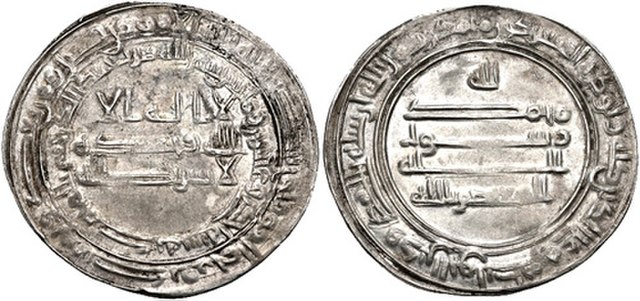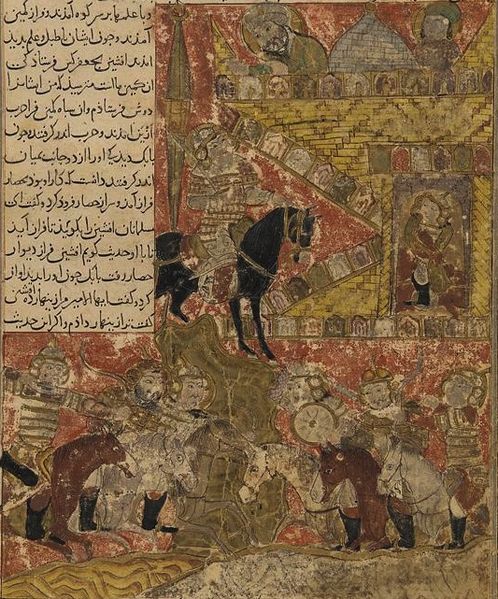Abu Ja'far Ashinas was a general of the Abbasid caliph Al-Mu'tasim. One of the earliest and most prominent members of al-Mu'tasim's Turkic guard, he rose to become one of the leading figures of the empire under al-Mu'tasim, serving as a commander in the Amorium campaign, and playing a leading role in the purge of the old Abbasid elites that followed. He was also governor of Egypt from 834, as well as of the Levant and Upper Mesopotamia from 838 on, although in practice he appointed deputies to govern in his stead. Under al-Mu'tasim's successor al-Wathiq, his powers were extended further into a virtual viceroyalty over all western provinces of the caliphate.
Silver dirham of al-Mu'tasim, minted at al-Muhammadiya in 836/7
Abū Isḥāq Muḥammad ibn Hārūn al-Rashīd, better known by his regnal name al-Muʿtaṣim biʾllāh, was the eighth Abbasid caliph, ruling from 833 until his death in 842. A younger son of Caliph Harun al-Rashid, he rose to prominence through his formation of a private army composed predominantly of Turkic slave-soldiers. This proved useful to his half-brother, Caliph al-Ma'mun, who employed al-Mu'tasim and his Turkish guard to counterbalance other powerful interest groups in the state, as well as employing them in campaigns against rebels and the Byzantine Empire. When al-Ma'mun died unexpectedly on campaign in August 833, al-Mu'tasim was thus well placed to succeed him, overriding the claims of al-Ma'mun's son al-Abbas.
Gold dinar of al-Mu'tasim, minted in Baghdad in 839
A gold dinar of al-Ma'mun, minted in Egypt in 830/1
Silver dirham of al-Mu'tasim, minted at al-Muhammadiya in 836/7
Babak parlays with al-Afshin, from Balami's Tārīkhnāma, 14th century




